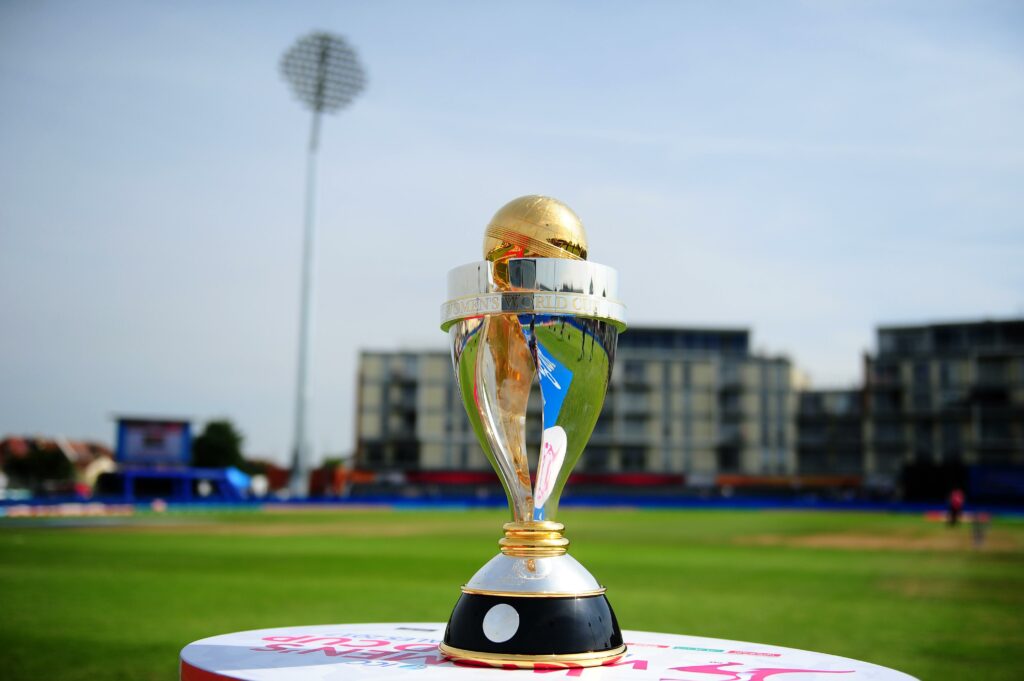Table of Contents
This year’s edition of the Women’s World Cup kickstarts on March 4 in New Zealand. The tournament will celebrate the rapidly rising and improving women’s international game with a month of riveting 50-overs cricket amidst the world’s best teams.
Here’s a guide for the tournament in store.
Number of teams
Top eight teams in the world will take part in the latest edition of the Women’s ODI World Cup on the Kiwi shores. Five of them qualified directly, while the other three made the cut via the global qualifying process. Hosts New Zealand were joined by four of the top five teams – India, England, Australia, South Africa – in the Women’s ODI Championship spanning 2017-2021 to make the World Cup directly.
The remaining three sides – Pakistan, West Indies and Bangladesh – are entering the World Cup after overcoming the qualification process. These teams made the cut on the virtue of rankings, which was the secondary option used to identify final qualifiers by the ICC upon the midway cancellation of the global qualifier held in Zimbabwe last year.
The outbreak of the Omicron variant in Africa led to multiple countries closing off their borders and that forced a suspension of the qualifiers. With no alternative window to reschedule matches, the ICC entirely cancelled the event and based their metric on rankings, which meant Thailand, Sri Lanka and Ireland missed out. Sri Lanka and Ireland’s absence makes this the first time Bangladesh have qualified for a Women’s ODI World Cup.
Format
Replicating the 2017 version of the tournament played in the United Kingdom, the 2022 event will stick to the single round-robin format for the league stage before the knock-outs, including two semi-finals and a final. Teams will play each of their opponents once during the league stage before those finishing in the top four of the points table contest the two semis, whose winners will play the title clash.
Points system
Teams will earn two points for a victory and share one each in case of a tie, with no points given for a defeat. The Super Over will not be in play for ties during the league stage but will be in play during the knock-out stages. If the Super Over is also tied, then another round of Super Over will be held. Unlike the 2019 men’s World Cup final, where the contentious boundary count rule separated winners England from New Zealand.
If teams are tied on points during the league stage, then the ones with a greater NRR will qualify. In the rare case, if two teams are tied on NRR also, they will be separated using the result of their match during the league stage.
DRS in play?
Yes, it will be the second successive edition of the women’s World Cup where the technology will be used.
Venues
The one-year postponement of the event and tightening up of government regulations amid the pandemic made ICC’s life difficult as far as managing the itinerary and the venues. But ultimately, the governing body came up with a list of six venues across New Zealand to be in use for the World Cup.
| Stadium | Amount of games |
| Bay Oval (Mount Maunganui) | 7 |
| University Oval (Dunedin) | 3 |
| Seddon Park (Hamilton) | 7 |
| Basin Reserve (Wellington) | 7 |
| Eden Park (Auckland) | 2 |
| Hagley Oval (Christchurch) | 5 |
Dates for marquee fixtures
The opening game between hosts NZ and WI is obviously keenly anticipated, but so are some of the other marquee fixtures for the tournament. Two of those are between arch-rivals India-Pakistan and England-Australia.
The first will be held in Mount Maunganui on March 6, while the second will be played a day earlier in Hamilton’s Seddon Park. The two semi-finals are scheduled for Wellington and Christchurch on March 30 and 31, respectively, ahead of the final to be played in Christchurch on April 3.


